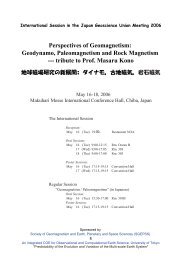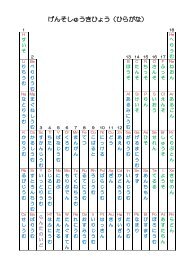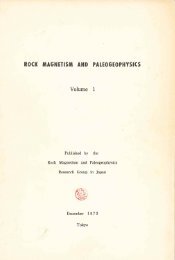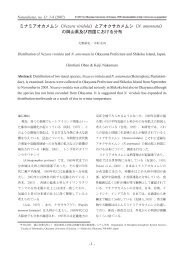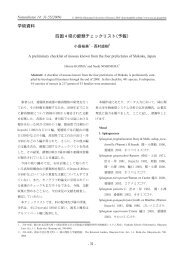Create successful ePaper yourself
Turn your PDF publications into a flip-book with our unique Google optimized e-Paper software.
<strong>Python</strong> <strong>Tutorial</strong>, Release 2.6.2<br />
3.2 First Steps Towards Programming<br />
Of course, we can use <strong>Python</strong> for more complicated tasks than adding two and two together. For instance, we can<br />
write an initial sub-sequence of the Fibonacci series as follows:<br />
>>> # Fibonacci series:<br />
... # the sum of two elements defines the next<br />
... a, b = 0, 1<br />
>>> while b < 10:<br />
... print b<br />
... a, b = b, a+b<br />
...<br />
1<br />
1<br />
2<br />
3<br />
5<br />
8<br />
This example introduces several new features.<br />
• The first line contains a multiple assignment: the variables a and b simultaneously get the new values 0<br />
and 1. On the last line this is used again, demonstrating that the expressions on the right-hand side are all<br />
evaluated first before any of the assignments take place. The right-hand side expressions are evaluated from<br />
the left to the right.<br />
• The while loop executes as long as the condition (here: b < 10) remains true. In <strong>Python</strong>, like in C, any<br />
non-zero integer value is true; zero is false. The condition may also be a string or list value, in fact any<br />
sequence; anything with a non-zero length is true, empty sequences are false. The test used in the example<br />
is a simple comparison. The standard comparison operators are written the same as in C: < (less than), ><br />
(greater than), == (equal to), = (greater than or equal to) and != (not equal to).<br />
• The body of the loop is indented: indentation is <strong>Python</strong>’s way of grouping statements. <strong>Python</strong> does not (yet!)<br />
provide an intelligent input line editing facility, so you have to type a tab or space(s) for each indented line.<br />
In practice you will prepare more complicated input for <strong>Python</strong> with a text editor; most text editors have an<br />
auto-indent facility. When a compound statement is entered interactively, it must be followed by a blank<br />
line to indicate completion (since the parser cannot guess when you have typed the last line). Note that each<br />
line within a basic block must be indented by the same amount.<br />
• The print statement writes the value of the expression(s) it is given. It differs from just writing the<br />
expression you want to write (as we did earlier in the calculator examples) in the way it handles multiple<br />
expressions and strings. Strings are printed without quotes, and a space is inserted between items, so you<br />
can format things nicely, like this:<br />
>>> i = 256*256<br />
>>> print ’The value of i is’, i<br />
The value of i is 65536<br />
A trailing comma avoids the newline after the output:<br />
>>> a, b = 0, 1<br />
>>> while b < 1000:<br />
... print b,<br />
... a, b = b, a+b<br />
...<br />
1 1 2 3 5 8 13 21 34 55 89 144 233 377 610 987<br />
Note that the interpreter inserts a newline before it prints the next prompt if the last line was not completed.<br />
18 Chapter 3. An Informal Introduction to <strong>Python</strong>



